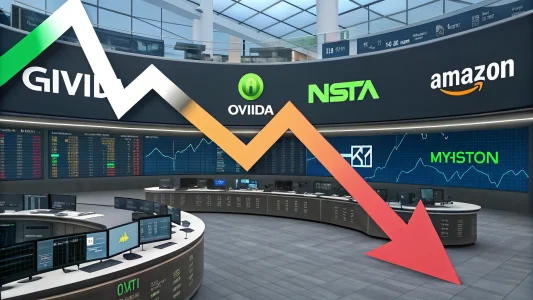One of the biggest positives of getting a company up and running is the ability to give back. Your ability to fund local, national, and global causes can pay off in myriad ways. But it’s essential that before you write your first check that you do a little behind-the-scenes work. The last thing you want is to make an avoidable misstep in setting up your corporate philanthropy efforts.
What types of mistakes are common, especially when businesses partner with nonprofits? One big challenge is a disconnect between what each party wants or expects. Another is the inability to work together toward a shared goal. And it’s never good to be so overly generous that you can’t deliver what you promise, placing your company’s bottom line in jeopardy.
The good news is that it doesn’t have to be hard to build relationships with nonprofits. All you have to do is follow what can best be described as the “golden rules” of these types of partnerships. When you do, you’ll reap the benefits. These include everything from better brand recognition to higher employee satisfaction scores, particularly when you get employee buy-in. Here are six Golden Rules that should guide your nonprofit partnerships.
Table of Contents
ToggleGolden Rule #1: Choose a partner whose values align with your company’s.
There are roughly 18 million nonprofits in the United States. With those numbers, you should be able to find a match that shares your business’s mission and values.
Molly MacDonald is the Founder of the Pink Fund, a charity offering 90-day grants to cover non-medical funds for qualifying breast cancer patients. In her experience, choosing a nonprofit in sync with your vision and purpose is essential.
“There should be an attraction to their mission, company culture, voice, branding,” explains MacDonald. “If the company is genuinely excited by the partnership instead of just checking a box, it will yield a much more successful partnership.” She adds that this type of true connection tends to appeal to consumers in search of authenticity from their preferred brands.
If you’re still confused as to which charity to support even after conducting due diligence, conduct a survey, ask your employees for suggestions. Or, if you like, give them a list of possibilities and let them choose. This is the first step to getting their buy-in.
Golden Rule #2: Make your partnership visible.
It’s great to support a nonprofit. But you’re not obligated to hide your relationship. In fact, most companies like to highlight the good deeds they do. A great example of this is TOMS Shoes.
Not a TOMS aficionado? TOMS donates one pair of shoes every time the company sells a pair. It’s a great swap and makes a lot of sense. This humanitarian arrangement has been going strong for more than a decade. And TOMS isn’t shy about leveraging its broader impact as a key differentiator.
You don’t have to feel like you’re being disingenuous by talking about your charitable partnerships. On the contrary, you should openly discuss them on your website, your blog, your social media pages — you name it.
Over time, you’ll be associated and intertwined with the nonprofit. This is good for both of your brands, as well as the people you each serve. Circling back to TOMS, think about how rewarding it is for customers to know they didn’t just buy footwear. They also bought footwear for kids who might not have any. That’s a powerful reason to keep buying from TOMS in the future.
Golden Rule #3: Get solid financial advice from a corporate tax professional.
When it comes to getting the most out of your partnership, you need to think about the tax ramifications. The less you have to pay in taxes each year, the more you can conceivably share. For instance, you might be able to give your employees a special year-end bonus all thanks to your corporate philanthropy measures.
Unless you have a CFO who understands tax law inside and outside, hire a professional before entering any agreements. You need to know not just how much you can spend but what your limits should be. Having a realistic knowledge of how your donations will affect your taxes will give you peace of mind.
Don’t forget to ask your tax advisor about matching your employees’ donations. Let’s say you support a specific charity as well as give your workers the chance to do likewise in paychecks. By making a match up to a certain percentage, can you achieve even higher tax breaks?
No leader wants to pay Uncle Sam more than is absolutely necessary. By knowing your fiscal parameters, you can set up a financially and philanthropically successful partnership.
Golden Rule #4: Put everything in writing.
Word-of-mouth contracts can go south. The problem usually comes down to interpretation. To avoid this conundrum, always insist on having your contractual partnership spelled out in a legally binding agreement.
What belongs in your written contract in your nonprofit partnership? There’s really nothing set in stone. Just make sure that all the bases are covered so no one’s left surprised — and no balls are dropped. Pink Fund Founder, Molly MacDonald says that the New York State Attorney General has some best practices guidelines that has helped them when working with corporate partners
Be advised that this will (and should) take some time. Your job isn’t to hurry along the process. Instead, concentrate on crossing all the “Ts”. A good place to begin is to begin walking through the flow of your journey forward as a team. What does that journey look like? Who’s responsible for each element of the journey? Tackling these broad-based questions early will remove any stumbling blocks.
Although you can hammer out a formal partnership without a lawyer, don’t dismiss the power of having a lawyer review it. Paying upfront for someone’s expertise could save you a lot of headaches in the long run. Plus, if either you or the nonprofit breaches your contract, you’ll have everything in writing.
Golden Rule #5: Start small to leave room for growth.
Maybe you read about IKEA’s recent partnership with a whole city in Sweden. Though you were inspired, you were equally awed — and worried that you couldn’t possibly do likewise. Relax: Your first nonprofit partnership doesn’t have to be extraordinary or huge to make a difference. Quite honestly, when you’re testing this type of arrangement, you should probably go small rather than go IKEA-big.
One method of starting a little at a time is to find a way to volunteer for or with the charity. If it’s local, like a food bank, you might pay your employees to help out for a day. If it’s global, you might consider funding a special event or making a one-time donation.
As you get to know the other nonprofit and its needs, you can strive for a more involved partnership. However, taking a conservative route is logical. After all, you might discover that the charity is harder to work with than you assumed. In that case, it would be better to know before you get in too deep.
Don’t be afraid to plant these small seeds across a number of charities, just to see which ones “stick”. You’ll probably start to get a good sense of which ones are putting you in the best light with employees or customers. Two-thirds of workers are attracted to purpose-driven employers and 55% would work for one even if the salary was lower. When you support charities your team approves of, they’ll let you know.
Golden Rule #6: Set metrics to monitor your progress.
It’s always a smart idea to measure all your campaigns and initiatives. Yet it can be a bit of a head-scratcher to decide how to measure your nonprofit relationships. Ultimately, you’ll need to pin down some metrics, though, or you’ll have trouble knowing if you’re making inroads.
What are some metrics you could apply when examining your partnership with a charity? You might want to track any business that came to you through your charity-focused marketing. As long as you have analytics in place, you can connect the dots between website visitors and sales. For instance, you might be able to figure out how many people watched your social giving blog and then made a purchase.
Another business KPI that could work for you is employee hours spent volunteering. You might be able to weigh that figure against any industry standards, if they exist. Even if they don’t, your statistics could set a baseline to rise above from year to year.
Just ensure that you consistently stay on top of any measurements you target. They’ll give you insights into how well your partnership is working. They may also give you more to discuss in your next (or inaugural!) corporate social responsibility (CSR) annual report.
No one would argue that companies have a responsibility to do as much good as they can. And doing good starts by offering a helping hand in the form of strategic partnerships with nonprofits. By following some simple golden rules, you can set up all the stakeholders involved for success.















